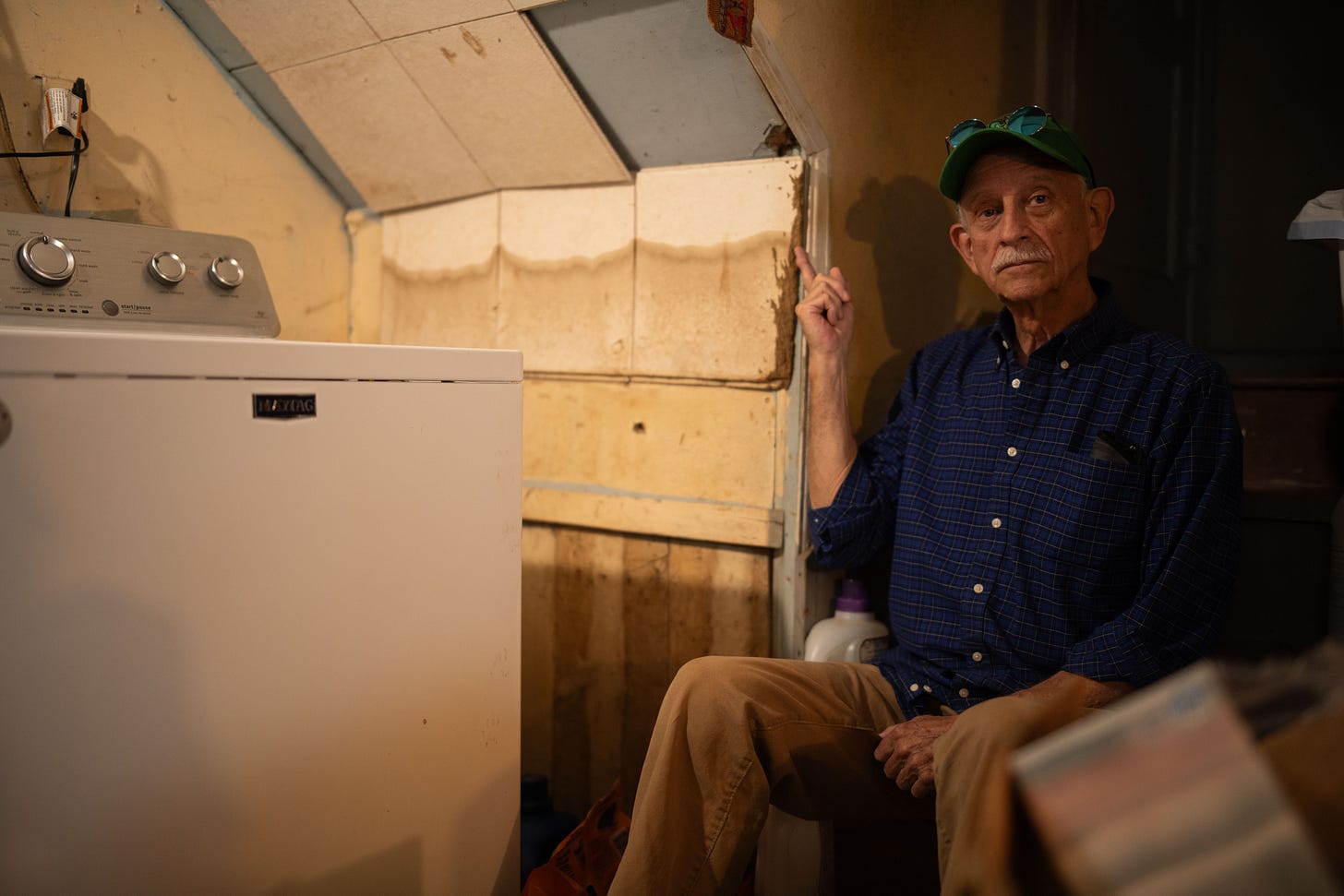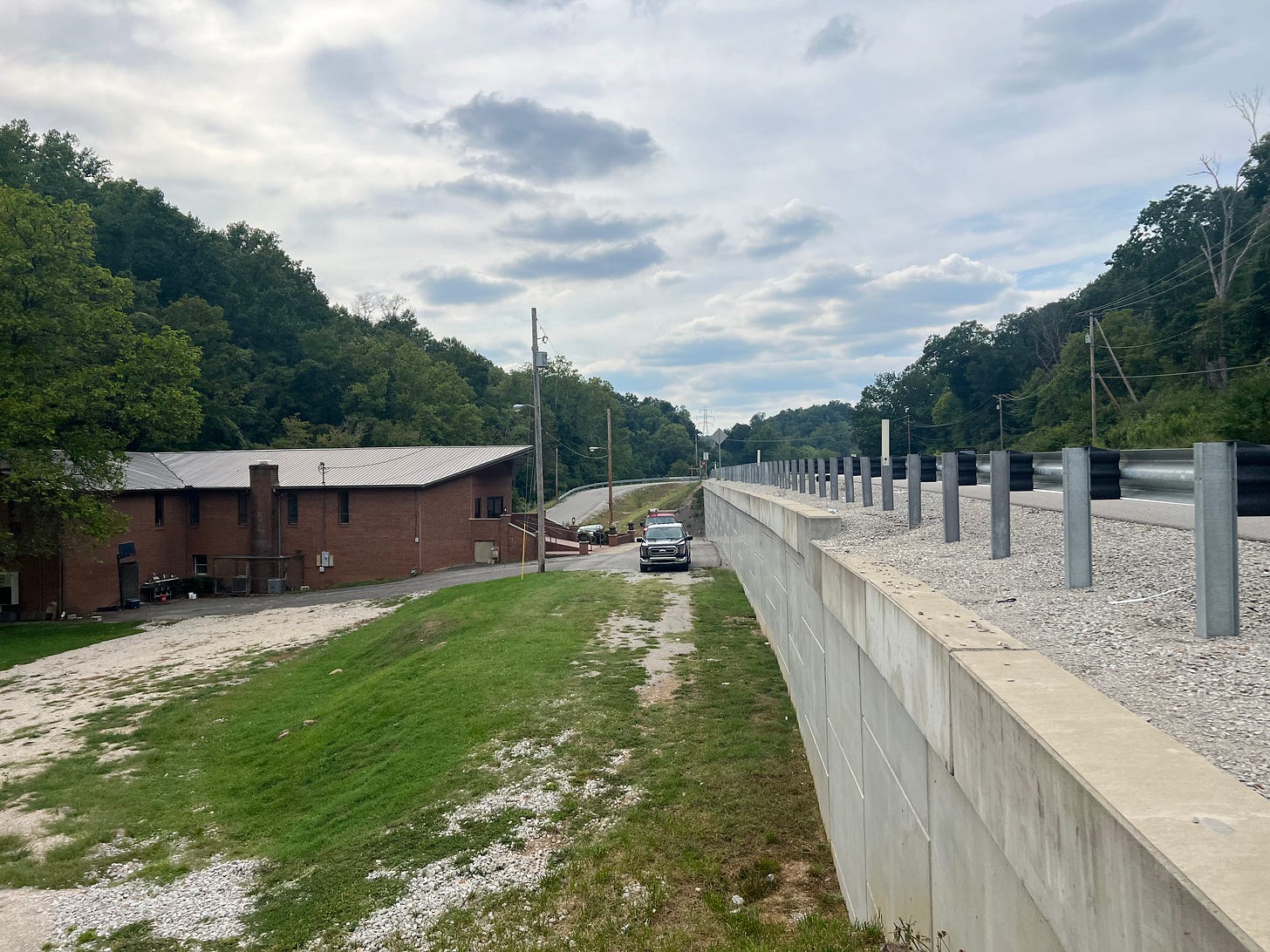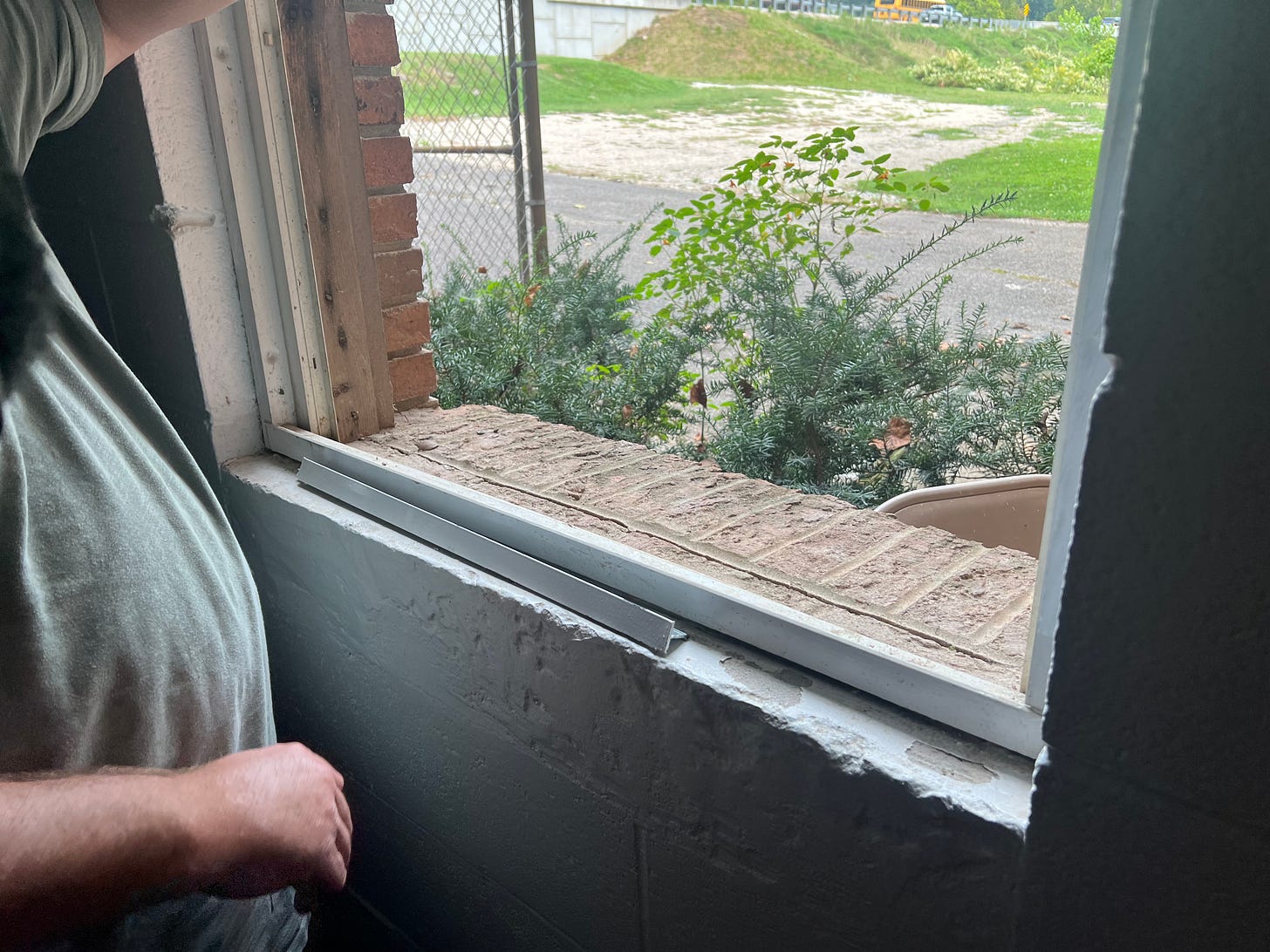Cabell County, Huntington flood victims want assistance, not more development projects in their watershed
A 2022 Corps of Engineers report identified decades of government projects as a factor in recent floods. Residents, unlikely to receive substantial government assistance, brace for the next big flood.

When flood water came rushing down the hill and into the Enslow Park neighborhood of Huntington in 2016, Karen Hoth said the sky was clear. “It had rained really hard earlier, but the sun came out and it was a beautiful day,” Hoth said.
Under sunny skies, Hoth watched in horror as water filled her garage, toppling a gas canister that sent a puddle of water towards her dryer which was running at the time. “It was very nerve wracking. All we could do was watch and hope nothing caught on fire,” she said.
Nothing caught fire. But the experience showed Hoth the power of flash flooding – a threat she has come to live in fear of as the frequency of extreme precipitation events in West Virginia has increased 55 percent over the last 60 years.
The most recent major flash flood in 2022 claimed Hoth’s car and property she and her husband, Mark Connelly, maintained as a rental. Beyond the destruction, Hoth said she and Connelly were left for months trying to clean their home after severe flooding. The smell, Hoth said, is the worst part. “It’s a stench of sewage, mud, solvents, cleaners, sadness, and the death of animals – I mean, it's just a horrendous stench.”

Climate change has spurred an increase in these extreme precipitation events in recent decades resulting in often deadly floods for West Virginians. The flood that claimed Hoth’s car and house was preceded by over four inches of rain in a single day. But a 2022 report from the US Army Corps of Engineers identified another culprit: decades of government-backed development projects built without appropriate measures to offset flooding in the Fourpole Creek watershed.
Stripping land of vegetation and covering it with impervious surfaces like concrete and asphalt robs the land of the ability to naturally soak up water and slow down run off. As identified in the USACE report, Huntington and Cabell County have seen a series of massive construction projects all within a mile of where a series of streams and creeks feed into Fourpole Creek with little done to prevent flooding.
Projects built within this area include the construction of an interstate, a high school built for 2,000 students, and a 96-acre business park. In the past few years alone, the West Virginia Division of Highways have widened State Route 10 in this area and the Cabell County Board of Education are breaking ground on a new school project. All of these projects have been built within a one-mile radius of where waterways meet up with the Fourpole Creek before flowing into Huntington.

As mentioned in the USACE report, the federal government helped conduct a hydrology study in the area in 1966 that called for the construction of dams to be built in the creek. Despite the recommendations, a followup report in 1978 noted that these “recommended measures were not implemented.” Similarly, the 1978 report called for the construction of detention ponds that would have covered 1,280 acre-feet in the area but were ultimately never built
When asked what government agencies have done to address flooding in his neighborhood, Connelly and Hoth said that FEMA and the City of Huntington have been helpful with cleanup efforts.
But, FEMA didn’t provide any substantial monetary assistance to the neighborhood because the agency determined the total damage didn’t meet requirements articulated in their assessment procedures. When asked if the agency has plans to provide future funding for this disaster, a representative from FEMA said that a request for relief from West Virginia Governor Jim Justice was denied by the Biden administration.
At the local level, the couple said they want assurance that their homes will either be bought from them or that a structure could be built to protect their neighborhood from upstream waterways. “It'd be a big deal. But it's just going to continue to happen. I have no confidence that we will not flood again, none at all. I know it's going to happen. I just don't know how much,” Hoth said.
While the City of Huntington doesn’t currently have plans to buy up properties in the flood zone or build a dam, the city does plan to address a finding in the USACE report: replacing bridges in the city that restrict the flow of water.
Bryan Chambers, communications director for Huntington Mayor Steve Williams, told Dragline that the bridge replacements are a coordinated effort with state and federal governments, adding that while flooding was not a consideration in the selection process for these bridges, the city has requested that the West Virginia Department of Transportation “take into consideration the flooding issues that are present in the Enslow Park area when the new bridge is designed to ensure ingress and egress.”
While the City of Huntington has borne the brunt of the damage from Fourpole Creek flooding, the majority of the watershed (the land that catches water and flows into the creek) is outside of the city limits in surrounding Cabell County.

“[T]he city alone cannot resolve this issue. With that said, however, [Huntington] Mayor Williams' perspective on this issue is that it necessitates that all agencies and positions of authority collaborate on a mutually-agreed upon strategy to create a solution,” Chambers said, adding that the City has been in communication with county officials about flooding.
Despite the majority of flood damage occurring in city limits, residents in Cabell County like Aaron Fairburn – owner of Bible Apostolic Church – haven’t been spared in recent years by flooding. “We've been here since about 1975. My grandfather started construction on this church. And never, not one single time did the water rise up to get into our church,’ Fairburn said.

Fairburn’s first memory of flooding at his family’s church dates back six years when he said the West Virginia Division of Highways expanded a highway in front of his church. “When they finally started construction, and they had this all cleared up here, that was the first time we ever seen flooding. We had about six inches in our basement.“
Since then, the flooding has gotten worse. Fairburn said his church took on more than four feet of water during the last major flood in 2022.

According to Fairburn, the Division of Highways bought the surrounding properties near him as they expanded the road, but refused to buy the church because it was a landmark. “Instead of buying us out they built this wall out in front right in front of us for $1.1 million. Now, we just deal with the salt overspray and flash flooding.”
“When they put us in the hole and they brought this road, you know, like 40, 50 feet over to, all that salt spray in the wintertime just down on us. Nobody made us aware of what that was going to be like.”
In responding to a request for comment, a spokesperson with the West Virginia Division of Highways said, “The decision whether or not to buy the Bible Apostolic Church did not have to do with it being a landmark.” In a followup request, the agency elaborated that in the case of Fairburn’s church, “WVDOH used means to reduce impacts, such as retaining walls, it did not need to acquire the church.”
As for the county, newly-elected commissioner Liza Caldwell told Dragline that she has been having conversations with the city on how to manage flooding in the county moving forward. “We need to review after the fall, the watershed to see what obstructions that can be addressed easily and work with all parties to look at solutions to slow the runoff during a high waterfall amount. We are at the beginning stages of developing a plan to make sure we are doing everything possible. This will take time simply because this is a very involved situation with different agencies, property owners, and making sure we go in the correct direction.”
But Fairburn is not holding his breath on receiving help from government agencies. “Politicians, they believe what they're saying. And they really mean it. But they don't really have the power to do what you think they do. There's so much bureaucracy that they want to help you and they literally can't.”



